Choosing Your Udon in Takamatsu
2014年09月20日

The city of Takamatsu in Kagawa is the home of udon. This flour-based noodle is deceptively simple, yet tricky to make well, as it takes years and years of practice and skill to get it just right. The subtle taste and texture vary from shop to shop with the famous ones having long lines outside, particularly at lunchtimes. So how do we choose our udon?

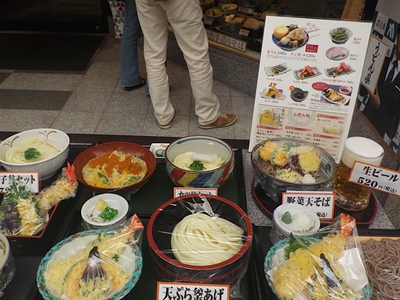
The answer is; by looking at the plastic food models which are often in the windows. They will tell you. Even if you can’t read Japanese these will give you both a pretty good idea of amounts and prices.


Like most foods, udon is basically hot or cold and both are equally delicious. Much of the flavor depends on skill of the maker to get the right ‘chewy’ texture and the condiments including green onions, chili spice (ichimi = one spice) or (chichi mi=seven spices) which will be on your table or near the cash register as you pay. Sloppy texture-less udon will never do!

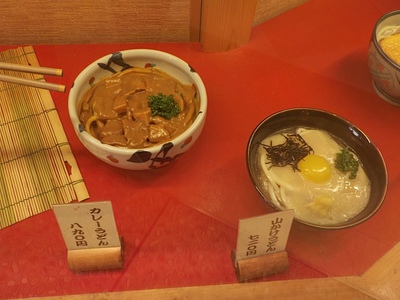
Toppings & side dishes including tempura vegetables are also important for flavor is the addition of a little soy sauce according to taste. However if you’re in need of further classifications then a quick search on this site below will tell you the different kinds.
https://www.google.com/search?q=types+of+udon+dishes&biw=1536&bih=688&source=lnms&sa=X&ei=GrcbVNa2F8-j8AW544HwBg&ved=0CAUQ_AUoAA&dpr=1
Udon is primarily a cheap dish and very quick to prepare for a customer. So you really shouldn’t have to spend any more than $5.00 or so for a satisfying meal.


Writing about this made me hungry for udon so I went and bought a bowl (see photo)

** Upcoming events. “Takamatsu=Arts for the upcoming Media Art Festival” next year. Details available as they come to hand so please stay posted on Pat and Cathy’s blog her on the Ashita Sanuki’s Art Takamatsu site.
October 10 th~ 19 th The Takamatsu Autumn Festival A fireworks display and the 19 th Daimyo’s (feudal lord’s) procession in Bushozan just outside Takamatsu and easily accessible by Kotoden train. This is a wonderful event in the historical Bushozan town. Highly recommended!
29 th (Wed.) November~3rd November (Mon.) Takamatsu Bonsai Festival.
Details to be announced on this site or call (087) 837 6003.
29 th Oct.~1st November (Sat.) Bonsai Stones exhibition at Hiunkaku Tamamo Park
29 th Oct. ~1st November Garden light up in Tamamo Park
31 st Oct~2 nd Nov. Bonsai and garden plants exhibition in Ritsurin Garden (Kikugetsu-tei building)
#1st October~2nd Nov. The Great Bonsai Exhibition and sale in the Kokubunji Bonsai Center
For further information in English or Chinese, please call the Takamatsu City Information office at I-Pal Kagawa
(087) 837 6003
For more info on Takamatsu:
http://wikitravel.org/en/Takamatsu
http://www.city.takamatsu.kagawa.jp/english/
http://tia-takamatsu.jp/
http://www.my-kagawa.jp/eg/
http://www.my-kagawa.jp/special/visitor/kanko/index.htm
http://www.i-pal.or.jp/profile/topics/kagawas-welcome-card.html
Other bloggers in Takamatsu of interest:
http://cathy.ashita-sanuki.jp
http://ogijima.com
http://ww8.tiki.ne.jp/~tmath/home/
Posted by pat at
11:16
│Tasty Foods
MOCHI KAGAWA STYLE
2012年02月10日
Now I have to admit one of the perks in my job is getting out of the office … and if there’s food on hand as well, then it really is hardly work at all and to be both enjoyed and stretched out for as long as possible I reckon.
My ever modest and wonderful self, a Korean and Chinese colleague were invited out to make a short video in the beautiful Kinashi area. Specifically, to Nakanishi san’s very traditional bonsai farm and report on a few of Japan’s New Years customs, which included making mochi. This is one hell of a beautiful homestead and we were pretty impressed with spaciousness of the place and the traditional architecture.
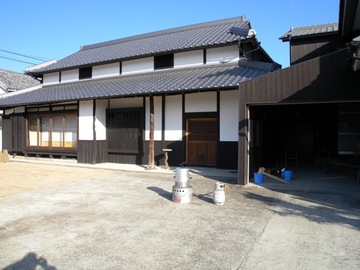
Our hosts from the local area first showed us the ‘kadomatsu’ traditional pine, bamboo, plants and arranged twigs in picture 5. The kadomatsu are seen everywhere in Japan at this time of the year and there are slight stylistic variations in some prefectures and I was told? But now can’t remember because I was too busy fidgeting and blowing into my hands to keep warm. In fact when it came around for my turn tot do the video interview for a couple of seconds my lips wouldn’t work it was that damn cold!

Somehow I got through this and was at the same time fascinated by the beauty of the bonsai.
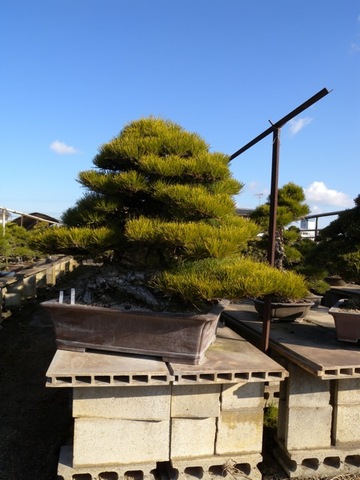
A part of what we were to report on was the upcoming 11th Asia-Pacific Bonsai and Suiseki Convention & Exhibition in Takamatsu running from Nov. 18th (Fri.) through to the 21st (Mon.)
This will be held in a few locations: Takamatsu City, Sunport Takamatsu, Tamamo Park, Ritsurin Garden, Kinashi and Kokubunji area. It will also include Niihama City and Ehime prefecture and Takasago-an Bonsai Garden.
The 11the ASPAC Takamatsu Conference Organizing Committee
31-14 satoh, Kinashi-cho, Takamatsu Kagawa, JAPAN Tel: 087-813-1787 for more information.
info@aspac-takamatsu.jp
http://www.aspac-takamatsu.jp/en/
On show, there will be bonsai from the Imperial Palace, bonsai masterworks, demonstrations, workshops and field tours. The website has more information on this.
Let’s get back to my blog …the last demonstration was making mochi and we all chipped in including a group of kids from the local kindergarten who were invited along. How come kids don’t seem to get cold? I swear they just smiled all the time while I was wriggling around in my clothes.
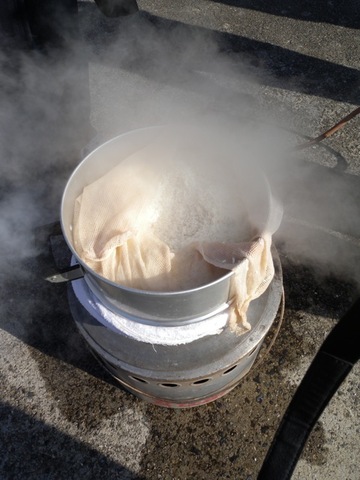
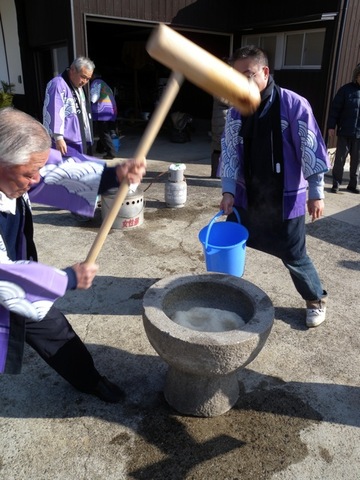
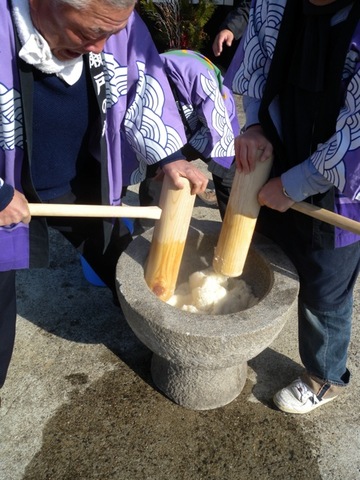
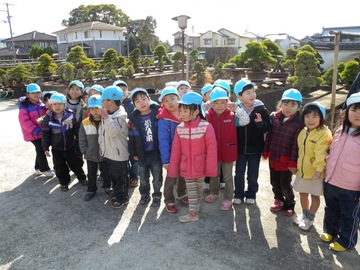
The ‘mochi gome’ (special rice cultivated for making mochi was steamed for about 30 minutes then pounded into a sticky paste. I enjoyed this bit as I could keep warm!
Then we wrapped bits in dried seaweed and dipped it in soy sauce. Apart from locking my jaws together and at least stopping the teeth from chattering it was delicious.
Keep all them cards n’ letters coming in. I’ll be back in February with some good stuff I’m working on now. Have a safe and prosperous year everyone!
My ever modest and wonderful self, a Korean and Chinese colleague were invited out to make a short video in the beautiful Kinashi area. Specifically, to Nakanishi san’s very traditional bonsai farm and report on a few of Japan’s New Years customs, which included making mochi. This is one hell of a beautiful homestead and we were pretty impressed with spaciousness of the place and the traditional architecture.

Our hosts from the local area first showed us the ‘kadomatsu’ traditional pine, bamboo, plants and arranged twigs in picture 5. The kadomatsu are seen everywhere in Japan at this time of the year and there are slight stylistic variations in some prefectures and I was told? But now can’t remember because I was too busy fidgeting and blowing into my hands to keep warm. In fact when it came around for my turn tot do the video interview for a couple of seconds my lips wouldn’t work it was that damn cold!

Somehow I got through this and was at the same time fascinated by the beauty of the bonsai.

A part of what we were to report on was the upcoming 11th Asia-Pacific Bonsai and Suiseki Convention & Exhibition in Takamatsu running from Nov. 18th (Fri.) through to the 21st (Mon.)
This will be held in a few locations: Takamatsu City, Sunport Takamatsu, Tamamo Park, Ritsurin Garden, Kinashi and Kokubunji area. It will also include Niihama City and Ehime prefecture and Takasago-an Bonsai Garden.
The 11the ASPAC Takamatsu Conference Organizing Committee
31-14 satoh, Kinashi-cho, Takamatsu Kagawa, JAPAN Tel: 087-813-1787 for more information.
info@aspac-takamatsu.jp
http://www.aspac-takamatsu.jp/en/
On show, there will be bonsai from the Imperial Palace, bonsai masterworks, demonstrations, workshops and field tours. The website has more information on this.
Let’s get back to my blog …the last demonstration was making mochi and we all chipped in including a group of kids from the local kindergarten who were invited along. How come kids don’t seem to get cold? I swear they just smiled all the time while I was wriggling around in my clothes.




The ‘mochi gome’ (special rice cultivated for making mochi was steamed for about 30 minutes then pounded into a sticky paste. I enjoyed this bit as I could keep warm!
Then we wrapped bits in dried seaweed and dipped it in soy sauce. Apart from locking my jaws together and at least stopping the teeth from chattering it was delicious.
Keep all them cards n’ letters coming in. I’ll be back in February with some good stuff I’m working on now. Have a safe and prosperous year everyone!
Posted by pat at
10:00
│Tasty Foods
UDON SCHOOL
2012年01月21日
There really is an Udon School in Takamatsu and at the end of last year just before Christmas, Oh san my fellow blogger from China and my good-self went to write our reports about the school and how to make a decent bowl of the perennial favorite from Kagawa; Sanuki Udon.
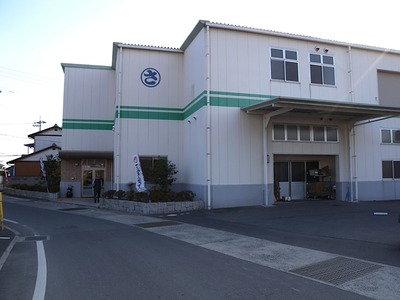
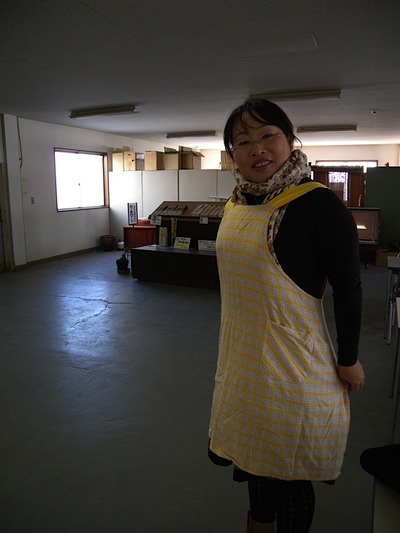
Udon school (Sanuki Men Gyo) is located on the southern side of the Ritsurin Tunnel, quite easy to get to by car or taxi from Takamatsu Station and there is a bus service to the area.
We arrived at the school, which is really a large room in an udon factory and greeted our teacher for the day, who was such a good-natured and very friendly man and he prepped us for the morning’s work. The reality is of course that this is a short course and once anyone’s done it, making the delicious noodles isn’t that hard. To make great noodles of course will take years of practice.
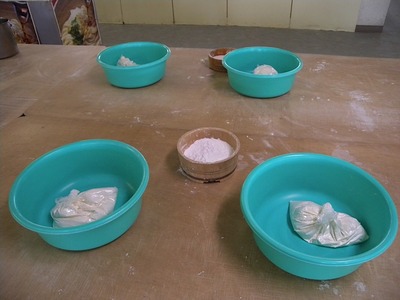
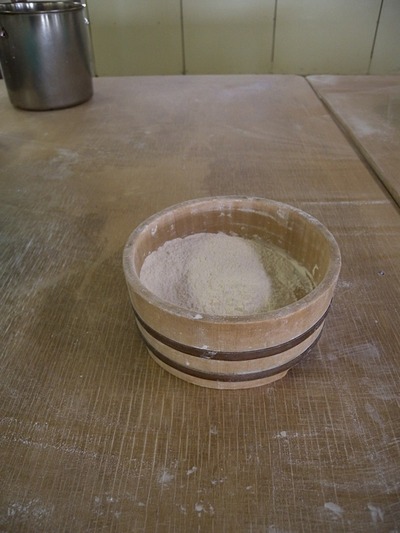
The basic stuff of udon couldn’t be simpler … flour and water. That’s it. Plain old flour and water. But centuries of eating noodles in Asia have given us all a great variety of both noodles and ways of preparation. I like ‘em all even the spaghetti variety that Marco Polo is said to have introduced to Europe from his long sojourn to China.
Udon needs a lot of quick & physical pounding, rolling, kneading, re-pounding and even trampling for those who don’t have enough power to do it to get just the right viscosity and texture. If we miss doing this right, it doesn’t taste good at all. If it’s the wrong elasticity, texture and viscosity it’s all over and may as well be thrown out.
The people of Kagawa insist their udon is the best and I believe them, as it didn’t taste very good in Tokyo when I tried a few bowls there. Some say it’s the water in the prefecture, others say the flour and perhaps it’s both.
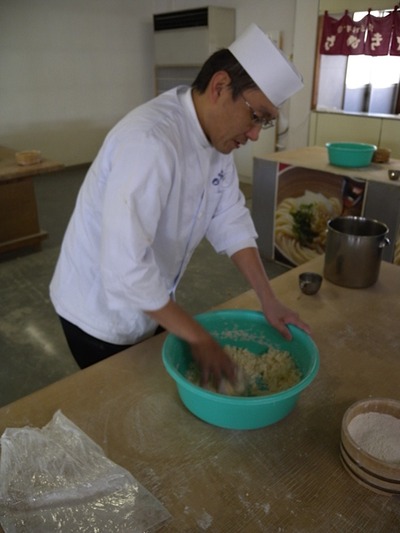
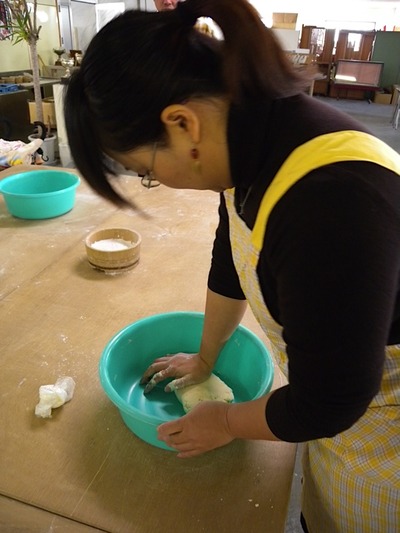
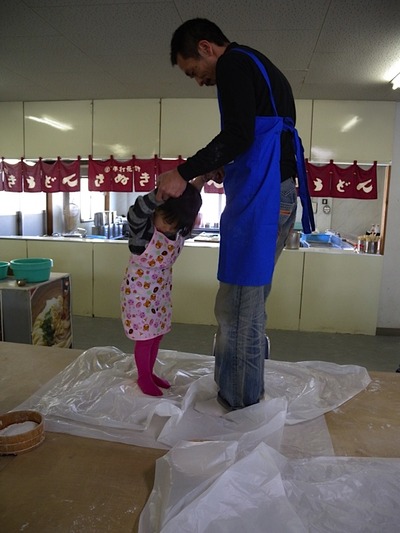
The dough was put into plastic bags and kneaded then inspected by our teacher until he was satisfied that it was nearing something like halfway passable udon.
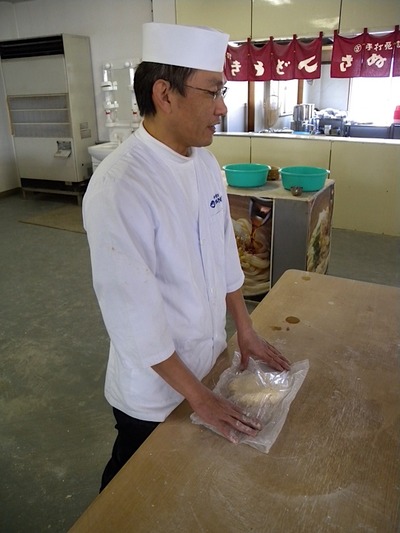

So we peppered the table with flour and labored away for a while and then it was time to roll it out by a long stick, wind it back on the stick a few more times, roll it out again and finally cut it into strips. The thickness and width of the noodles is critical to the taste and I bungled mine badly …

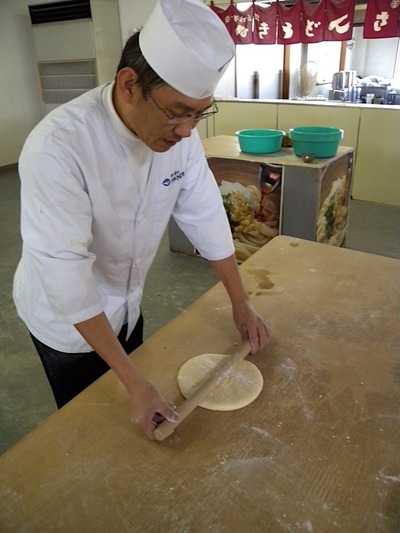
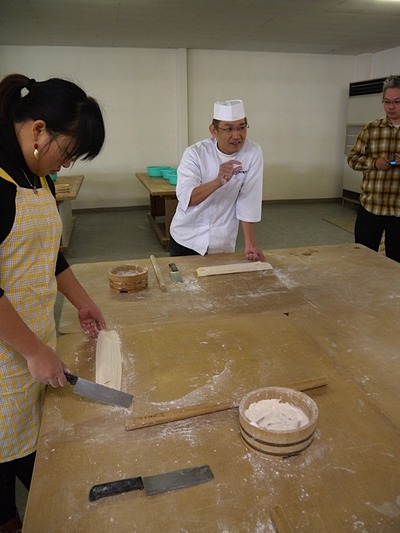
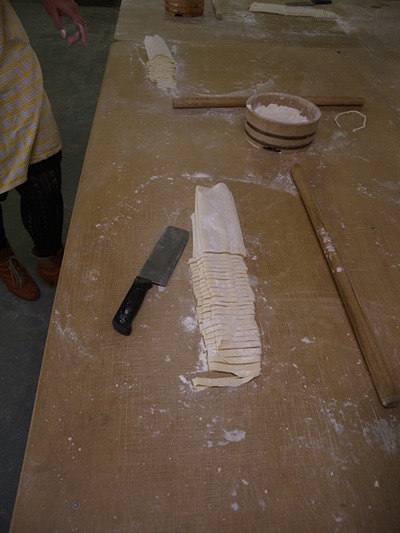
Oh san made some really good noodles and I felt ashamed at my pathetic effort in comparison. Maybe it’s because she’s Chinese and has been around noodles longer? We then boiled them for about 15 minutes, served it hot with stock (dashi) then garnished with ginger and chopped green onions. Anyway, unlike mine, hers tasted pretty good.
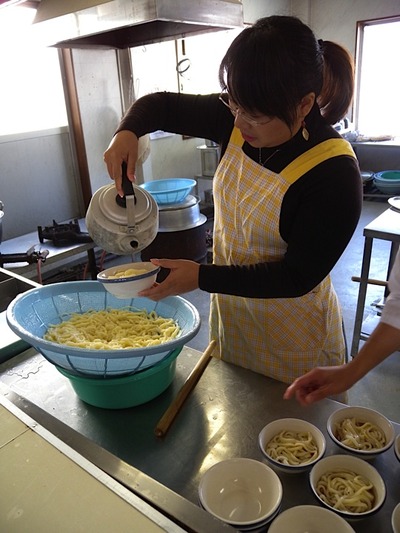
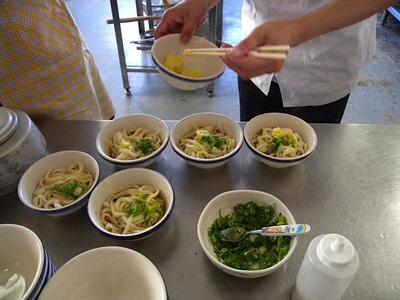
So if you’re in Kagawa and need a cheap afternoon or morning’s fun this is the place and guess what? We both received a graduation diploma. Please contact the Takamatsu Tourist Information Office for details. Or write me and I’ll provide the contacts of this school for you.
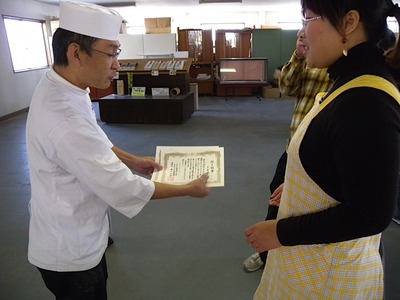
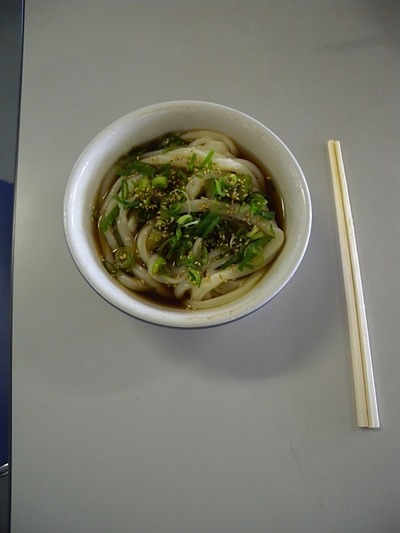
That’s it for this week and I’ll be back before the end of the month so please keep all those cards, letters and comments coming in!


Udon school (Sanuki Men Gyo) is located on the southern side of the Ritsurin Tunnel, quite easy to get to by car or taxi from Takamatsu Station and there is a bus service to the area.
We arrived at the school, which is really a large room in an udon factory and greeted our teacher for the day, who was such a good-natured and very friendly man and he prepped us for the morning’s work. The reality is of course that this is a short course and once anyone’s done it, making the delicious noodles isn’t that hard. To make great noodles of course will take years of practice.


The basic stuff of udon couldn’t be simpler … flour and water. That’s it. Plain old flour and water. But centuries of eating noodles in Asia have given us all a great variety of both noodles and ways of preparation. I like ‘em all even the spaghetti variety that Marco Polo is said to have introduced to Europe from his long sojourn to China.
Udon needs a lot of quick & physical pounding, rolling, kneading, re-pounding and even trampling for those who don’t have enough power to do it to get just the right viscosity and texture. If we miss doing this right, it doesn’t taste good at all. If it’s the wrong elasticity, texture and viscosity it’s all over and may as well be thrown out.
The people of Kagawa insist their udon is the best and I believe them, as it didn’t taste very good in Tokyo when I tried a few bowls there. Some say it’s the water in the prefecture, others say the flour and perhaps it’s both.



The dough was put into plastic bags and kneaded then inspected by our teacher until he was satisfied that it was nearing something like halfway passable udon.


So we peppered the table with flour and labored away for a while and then it was time to roll it out by a long stick, wind it back on the stick a few more times, roll it out again and finally cut it into strips. The thickness and width of the noodles is critical to the taste and I bungled mine badly …




Oh san made some really good noodles and I felt ashamed at my pathetic effort in comparison. Maybe it’s because she’s Chinese and has been around noodles longer? We then boiled them for about 15 minutes, served it hot with stock (dashi) then garnished with ginger and chopped green onions. Anyway, unlike mine, hers tasted pretty good.


So if you’re in Kagawa and need a cheap afternoon or morning’s fun this is the place and guess what? We both received a graduation diploma. Please contact the Takamatsu Tourist Information Office for details. Or write me and I’ll provide the contacts of this school for you.


That’s it for this week and I’ll be back before the end of the month so please keep all those cards, letters and comments coming in!
Posted by pat at
11:34
│Tasty Foods
THE ART OF SLURP …
2012年01月20日

As a child, my parents would have had a blue fit if any of us slurped soup, no matter how tasty. It just wasn’t and still isn’t done. Not here in Kagawa, and certainly not with the specialty of Kagawa; udon! And tasty it really is and this man has been adroitly seduced by the slippery, wet stuff. Udon noodles are served (usually hot) in bowls with the dashi (stock) with condondiments to suit tastes. Ginger, hot pepper powder, grated radish, mirin and sesame are perennial favorites and used throughout the four seasons. Udon’s taste is subtle but believe me it grows on you… I was a bowl-a-day man for a few years there and at the low price it’s an easy and wonderful habit. I was going to tell a story about an old girlfriend who used to bite off pieces, do something inside her mouth which I still cannot understand, then pull it out tied in a knot. But I’m digressing …
Chilled in the summer, hot in the winter:
Some varieties are hot, plucked from a communal bowl and dunked in a sauce made of ‘dashi’ and soy sauce. Others have toppings of tofu, some topped with tempura (deep fried veggies or shrimps etc.) The simpler the better I reckon and the price is ridiculously cheap, around 400 yen a serve with a topping. We could talk all day about the varieties of udon, for there are heaps of them but the basics should suffice.
Kagawans insist theirs is the true udon and I have to agree, as there is something unique about the taste of the local stuff that isn’t quite the same anywhere else in Japan. It’s true, it is a little different and the taste? In two small words; subtle and unique. All right, let’s throw in ‘very good’ and ‘a bit unusual’. There is a definite difference in taste between the hand-made udon noodles and machine made ones.
Restaurants in Kagawa are p-e-n-t-i-f-u-l, especially around train stations. All one has to remember is to look for signs with the Japanese letters written below. So, if you’re unfamiliar with the Japanese language, then why not cut this out now and carry it in your wallet?
うどん
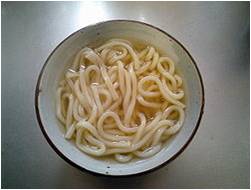
I hope you’ll try to remember the word and the characters above even if you aren’t a Japanese speaker. This signs will be everywhere. Please do drop in and try this wonderful food. Start with a basic simple dish like the one bellow with just some green onions, sesame seeds and a dash of ginger for the basic taste. Next time perhaps, be adventurous and experiment with different toppings. Most of all, don’t be afraid to slurp! It’ll be a welcome noise of appreciation for the cooks and staff.
Posted by pat at
10:00
│Tasty Foods
TASTY TAKAMATSU FOODS LOCAL FOODS FAIR
2011年10月24日

Walking around with my eyes open can be a change. These last few weekends, I’ve noticed stalls in the Takamatsu Sunport area selling a wide variety of locally grown foods and promoted by the local government.


The famers’ life can be a difficult one as the seasons fluctuate between good and bad everywhere including Kagawa with its historical problems with water. What is interesting to see is the level of government support agricultural societies here have to package, distribute and sell to we consumers.



Eggplant, soybeans, every kind of condiment and lots of samples! I love samples, so made short-work of the free food handouts. The deep fried potato croquettes didn’t stand a chance.



To see a good working cooperation between local government, agriculturalists and marketers bodes well for the prefecture generally we think. Synergy is something the Japanese have always had a natural ability for. And with a recent initiative to change the name of Kagawa Prefecture to Udon Prefecture (I’m being perfectly serious, there is talk of this) I wonder how it will be? Thinking of Kagawa as Udon?



I’m not really sure that’s a good idea although there’s been one name change already, from ‘Sanuki ‘to Kagawa. Welcome to Udon just doesn’t have any ring to it I think? I graduated from Udon University doesn’t sound quite right …
Anyway, when in Udon …. I mean Kagawa, please take time on a Saturday to look at the local foods market in this area. Contact the Tourist Information Bureau for details.
http://www.takamatsu.or.jp/eng/tourist/index.html



I’ll be back soon with more on our great city of Takamatsu (unless there’s been a name change?) so see you soon!
Posted by pat at
21:54
│Tasty Foods
MOCHI KAGAWA STYLE
2011年02月01日
Now I have to admit one of the perks in my job is getting out of the office … and if there’s food on hand as well, then it really is hardly work at all and to be both enjoyed and stretched out for as long as possible I reckon.
My ever modest and wonderful self, a Korean and Chinese colleague were invited out to make a short video in the beautiful Kinashi area. Specifically, to Nakanishi san’s very traditional bonsai farm and report on a few of Japan’s New Years customs, which included making mochi. This is one hell of a beautiful homestead and we were pretty impressed with spaciousness of the place and the traditional architecture.

Our hosts from the local area first showed us the ‘kadomatsu’ traditional pine, bamboo, plants and arranged twigs in picture 5. The kadomatsu are seen everywhere in Japan at this time of the year and there are slight stylistic variations in some prefectures and I was told? But now can’t remember because I was too busy fidgeting and blowing into my hands to keep warm. In fact when it came around for my turn tot do the video interview for a couple of seconds my lips wouldn’t work it was that damn cold!

Somehow I got through this and was at the same time fascinated by the beauty of the bonsai.

A part of what we were to report on was the upcoming 11th Asia-Pacific Bonsai and Suiseki Convention & Exhibition in Takamatsu running from Nov. 18th (Fri.) through to the 21st (Mon.)
This will be held in a few locations: Takamatsu City, Sunport Takamatsu, Tamamo Park, Ritsurin Garden, Kinashi and Kokubunji area. It will also include Niihama City and Ehime prefecture and Takasago-an Bonsai Garden.
The 11the ASPAC Takamatsu Conference Organizing Committee
31-14 satoh, Kinashi-cho, Takamatsu Kagawa, JAPAN Tel: 087-813-1787 for more information.
info@aspac-takamatsu.jp
http://www.aspac-takamatsu.jp/en/
On show, there will be bonsai from the Imperial Palace, bonsai masterworks, demonstrations, workshops and field tours. The website has more information on this.
Let’s get back to my blog …the last demonstration was making mochi and we all chipped in including a group of kids from the local kindergarten who were invited along. How come kids don’t seem to get cold? I swear they just smiled all the time while I was wriggling around in my clothes.




The ‘mochi gome’ (special rice cultivated for making mochi was steamed for about 30 minutes then pounded into a sticky paste. I enjoyed this bit as I could keep warm!
Then we wrapped bits in dried seaweed and dipped it in soy sauce. Apart from locking my jaws together and at least stopping the teeth from chattering it was delicious.
Keep all them cards n’ letters coming in. I’ll be back in February with some good stuff I’m working on now. Have a safe and prosperous year everyone!
My ever modest and wonderful self, a Korean and Chinese colleague were invited out to make a short video in the beautiful Kinashi area. Specifically, to Nakanishi san’s very traditional bonsai farm and report on a few of Japan’s New Years customs, which included making mochi. This is one hell of a beautiful homestead and we were pretty impressed with spaciousness of the place and the traditional architecture.

Our hosts from the local area first showed us the ‘kadomatsu’ traditional pine, bamboo, plants and arranged twigs in picture 5. The kadomatsu are seen everywhere in Japan at this time of the year and there are slight stylistic variations in some prefectures and I was told? But now can’t remember because I was too busy fidgeting and blowing into my hands to keep warm. In fact when it came around for my turn tot do the video interview for a couple of seconds my lips wouldn’t work it was that damn cold!

Somehow I got through this and was at the same time fascinated by the beauty of the bonsai.

A part of what we were to report on was the upcoming 11th Asia-Pacific Bonsai and Suiseki Convention & Exhibition in Takamatsu running from Nov. 18th (Fri.) through to the 21st (Mon.)
This will be held in a few locations: Takamatsu City, Sunport Takamatsu, Tamamo Park, Ritsurin Garden, Kinashi and Kokubunji area. It will also include Niihama City and Ehime prefecture and Takasago-an Bonsai Garden.
The 11the ASPAC Takamatsu Conference Organizing Committee
31-14 satoh, Kinashi-cho, Takamatsu Kagawa, JAPAN Tel: 087-813-1787 for more information.
info@aspac-takamatsu.jp
http://www.aspac-takamatsu.jp/en/
On show, there will be bonsai from the Imperial Palace, bonsai masterworks, demonstrations, workshops and field tours. The website has more information on this.
Let’s get back to my blog …the last demonstration was making mochi and we all chipped in including a group of kids from the local kindergarten who were invited along. How come kids don’t seem to get cold? I swear they just smiled all the time while I was wriggling around in my clothes.




The ‘mochi gome’ (special rice cultivated for making mochi was steamed for about 30 minutes then pounded into a sticky paste. I enjoyed this bit as I could keep warm!
Then we wrapped bits in dried seaweed and dipped it in soy sauce. Apart from locking my jaws together and at least stopping the teeth from chattering it was delicious.
Keep all them cards n’ letters coming in. I’ll be back in February with some good stuff I’m working on now. Have a safe and prosperous year everyone!
Posted by pat at
09:00
│Tasty Foods
VEGETARIANS IN KAGAWA
2010年09月30日
Humming a few bars of ‘Singing in the Rain’, I was in a pretty good mood as I skipped into JC’s office. And then I thought, gee, there are some things will never change around here … The secretary was painting her nails, blowing them once in a while. A fan rattled in the corner and JC had his feet up on the desk listening to a horse race.
“What’s the big assignment boss?” I asked, taking off my cap and bicycle trouser clips.
‘Ahhh don’t sit down, you’ll be leaving soon.’‘Vegetarians in Kagawa’ he sniffed and said, leaving his feet up …
‘Yes, Vegetarians in Kagawa’.
‘Think you can handle it?’‘Not fool around looking for cheap laughs and free meals? Make it interesting?’‘Dig up some info?’
“Why of course I can! This is right up my alley JC!” I used to be a vegetarian for years.”
“Besides, this week the only pressing social engagement I have is the Enchantment Under the Sea Dance” so I’ll have it done pronto.”
And I was a vegetarian too. Honestly, I was. I’ve given it up for a while, as it was too hard for my long-suffering wife to make separate meals for me three times a day. The family has never been into it and I’ve never tried to coerce them. When things settle down I’ll return to a lacto (milk and eggs) vegetarian lifestyle, as I felt better for it and all things considered, it’s just better for the planet.
Some years ago, on retreats in a Buddhist temple kitchen in Okayama Prefecture I learned a little about Buddhist vegetarian cooking because I had to help out as a participant in these retreats a couple of times a year. Once every three days it was my turn to work in the kitchen and help the head cook. I’m no longer interested in doing retreats at all I should add. But the food I really do miss.
Retreats are silent affairs with 3:00 AM starts and last 7 or sometimes 9 days and the meals were a little spartan but great. There was a ‘no talking’ rule at all times and nothing fancy to eat. Traditional ‘Shojin Ryori’ vegetarian was the type of food we ate. This was often rice gruel based and typical temple food. Lots of tofu, sautéed eggplants in zesty garnishes, piles of genmai (brown rice) which is really good for you, topped with ground sesame seed and a pickled plum on top.
So here’s the good news: there’s no need to do a retreat for the experience, as my old friend Nishimura san has a mountain retreat center he pretty much built himself near a hot spring town called Shionue. By invitation, Nishimura san offers an afternoon of tea; quiet meditation and a meal cooked the same way in temples 700 years ago. These events are held periodically throughout the year and should you wish to attend, either contact me through the letters link on this page or to Nishimura san on his web site.
http://www.geocities.jp/ajiminatobansyo/
I should point out that he also has a great and inexpensive restaurant in Aji, a short drive out of Takamatsu and the food is not all vegetarian but pretty delicious. The restaurant is by application for a guest list sent out once a month. Here’s some information in Japanese on the above link for you. (don’t forget to click the top right button on the page for the map)


Being a lacto-vegetarian, vegetarian or vegan can be a tough lifestyle option for foreigners here, simply because there are so few vegetarians in the land where just a 100 years ago, everyone once was. I used to buy a lot of meat substitutes from the Japan Vegetarian Society’s links. The society itself is a pretty lame and dull affair. Perhaps more about the nice idea of vegetarianism rather than anything practical. Here’s the link anyway for what it’s worth.
http://www.jpvs.org/Eng/ep1/index-eng.html
Please don’t hold your breath waiting for an answer from these people. Z-z-z-z-z-z …S-n-n-x-x-x-x-x …
So in Kagawa we have to think not about vegetarian restaurants as such but rather restaurants that have vegetarian menus. There are some places here in Takamatsu that do offer good vegetarian food and this is yet another improvement from a few years ago. I remember one dreadful place that advertized ‘vegetarian menu’, expensive too, when I went out for a meal with some non-vegetarian friends. All they served up for me were boring salads with a couple of fried onion rings artfully arranged. Rabbit food. Things have improved markedly since then.
Be positive Pat! OK, here’s a really, really great vegetarian restaurant in Zentsuji a little ways from Takamatsu. These people can really cook splendidly and the cuisines, for that’s what they are, fine cuisines, are entirely vegetarian. I highly recommend this restaurant, which is rather inexpensive and serves delicious vegetarian fare.
http://www.paysan.jp/kagawa/
Thali Spice (Indian restaurant) has a cheap, good vegetarian selection and is in the Food Court on the 2nd floor of the YouMe Town shopping center near Takamatsu.
Aeon Shopping Center on the outskirts of Takamatsu also has a semi-vegetarian restaurant on the ground (1st) floor.
But for me, the best deal for nosebag feed of various vegetarian foods although not strictly a vegetarian restaurant, is this one; Yasashi Shokutaku on the 3rd floor and located in Marugame Machi shopping arcade, just down from the dome I wrote about a few weeks ago. Here you’ll find great fried tofu, lots of beans, lentils all kinds of cooked and raw vegetables. You can even chose your own vegetables and the chefs will prepare them to your own taste.





Anyway, getting a supply of fresh vegetables is also important if you’re going to cook vegetarian and rather than supermarkets, farmers’ markets (fureai ichiba in Takamatsu) (ふれあい市場高松)are the best bet. There are a few around Takamatsu and if you cut-and-paste the Japanese above and check on Google Maps they’ll appear.


And keep all them cards and letters comin’ in! I can answer now so I will get back to you for sure.
Cathy Hirano and Chris Gaskett both living in Takamatsu have kindly supplied me with some additional information listed below. I hope you’ll take the time to look at Cathy’s informative blog.
http://cathy.ashita-sanuki.jp/e273179.html
Macrobiotic restaurant; Fukuroku Chaya. It serves brown rice and no meat products at all. Lunch set is 800 yen and macrobiotic curry and rice is 650yen.
Address 2F Hiraga Bldg, Kamei-cho, Takamatsu
Tel: 090-4787-0485
Open: 11:45~14:00
Closed: Sat., Sun, and national holidays
No parking
This site has a map
http://www.e-komachi.com/web/gourmet/detail.asp?tnid=30698
“And this site has a photo of the outside plus kuchi komi in Japanese.”
http://r.tabelog.com/kagawa/A3701/A370101/37002846/dtlrvwlst/908081/
Thanks Cathy!
Vegetarian Friendly Restaurants in Takamatsu
http://www.reviewmylife.co.uk/blog/2010/02/06/vegetarian-friendly-restaurants-in-takamatsu-japan/
Thanks Chris!

“What’s the big assignment boss?” I asked, taking off my cap and bicycle trouser clips.
‘Ahhh don’t sit down, you’ll be leaving soon.’‘Vegetarians in Kagawa’ he sniffed and said, leaving his feet up …
‘Yes, Vegetarians in Kagawa’.
‘Think you can handle it?’‘Not fool around looking for cheap laughs and free meals? Make it interesting?’‘Dig up some info?’
“Why of course I can! This is right up my alley JC!” I used to be a vegetarian for years.”
“Besides, this week the only pressing social engagement I have is the Enchantment Under the Sea Dance” so I’ll have it done pronto.”
And I was a vegetarian too. Honestly, I was. I’ve given it up for a while, as it was too hard for my long-suffering wife to make separate meals for me three times a day. The family has never been into it and I’ve never tried to coerce them. When things settle down I’ll return to a lacto (milk and eggs) vegetarian lifestyle, as I felt better for it and all things considered, it’s just better for the planet.
Some years ago, on retreats in a Buddhist temple kitchen in Okayama Prefecture I learned a little about Buddhist vegetarian cooking because I had to help out as a participant in these retreats a couple of times a year. Once every three days it was my turn to work in the kitchen and help the head cook. I’m no longer interested in doing retreats at all I should add. But the food I really do miss.
Retreats are silent affairs with 3:00 AM starts and last 7 or sometimes 9 days and the meals were a little spartan but great. There was a ‘no talking’ rule at all times and nothing fancy to eat. Traditional ‘Shojin Ryori’ vegetarian was the type of food we ate. This was often rice gruel based and typical temple food. Lots of tofu, sautéed eggplants in zesty garnishes, piles of genmai (brown rice) which is really good for you, topped with ground sesame seed and a pickled plum on top.
So here’s the good news: there’s no need to do a retreat for the experience, as my old friend Nishimura san has a mountain retreat center he pretty much built himself near a hot spring town called Shionue. By invitation, Nishimura san offers an afternoon of tea; quiet meditation and a meal cooked the same way in temples 700 years ago. These events are held periodically throughout the year and should you wish to attend, either contact me through the letters link on this page or to Nishimura san on his web site.
http://www.geocities.jp/ajiminatobansyo/
I should point out that he also has a great and inexpensive restaurant in Aji, a short drive out of Takamatsu and the food is not all vegetarian but pretty delicious. The restaurant is by application for a guest list sent out once a month. Here’s some information in Japanese on the above link for you. (don’t forget to click the top right button on the page for the map)


Being a lacto-vegetarian, vegetarian or vegan can be a tough lifestyle option for foreigners here, simply because there are so few vegetarians in the land where just a 100 years ago, everyone once was. I used to buy a lot of meat substitutes from the Japan Vegetarian Society’s links. The society itself is a pretty lame and dull affair. Perhaps more about the nice idea of vegetarianism rather than anything practical. Here’s the link anyway for what it’s worth.
http://www.jpvs.org/Eng/ep1/index-eng.html
Please don’t hold your breath waiting for an answer from these people. Z-z-z-z-z-z …S-n-n-x-x-x-x-x …
So in Kagawa we have to think not about vegetarian restaurants as such but rather restaurants that have vegetarian menus. There are some places here in Takamatsu that do offer good vegetarian food and this is yet another improvement from a few years ago. I remember one dreadful place that advertized ‘vegetarian menu’, expensive too, when I went out for a meal with some non-vegetarian friends. All they served up for me were boring salads with a couple of fried onion rings artfully arranged. Rabbit food. Things have improved markedly since then.
Be positive Pat! OK, here’s a really, really great vegetarian restaurant in Zentsuji a little ways from Takamatsu. These people can really cook splendidly and the cuisines, for that’s what they are, fine cuisines, are entirely vegetarian. I highly recommend this restaurant, which is rather inexpensive and serves delicious vegetarian fare.
http://www.paysan.jp/kagawa/
Thali Spice (Indian restaurant) has a cheap, good vegetarian selection and is in the Food Court on the 2nd floor of the YouMe Town shopping center near Takamatsu.
Aeon Shopping Center on the outskirts of Takamatsu also has a semi-vegetarian restaurant on the ground (1st) floor.
But for me, the best deal for nosebag feed of various vegetarian foods although not strictly a vegetarian restaurant, is this one; Yasashi Shokutaku on the 3rd floor and located in Marugame Machi shopping arcade, just down from the dome I wrote about a few weeks ago. Here you’ll find great fried tofu, lots of beans, lentils all kinds of cooked and raw vegetables. You can even chose your own vegetables and the chefs will prepare them to your own taste.





Anyway, getting a supply of fresh vegetables is also important if you’re going to cook vegetarian and rather than supermarkets, farmers’ markets (fureai ichiba in Takamatsu) (ふれあい市場高松)are the best bet. There are a few around Takamatsu and if you cut-and-paste the Japanese above and check on Google Maps they’ll appear.


And keep all them cards and letters comin’ in! I can answer now so I will get back to you for sure.
Cathy Hirano and Chris Gaskett both living in Takamatsu have kindly supplied me with some additional information listed below. I hope you’ll take the time to look at Cathy’s informative blog.
http://cathy.ashita-sanuki.jp/e273179.html
Macrobiotic restaurant; Fukuroku Chaya. It serves brown rice and no meat products at all. Lunch set is 800 yen and macrobiotic curry and rice is 650yen.
Address 2F Hiraga Bldg, Kamei-cho, Takamatsu
Tel: 090-4787-0485
Open: 11:45~14:00
Closed: Sat., Sun, and national holidays
No parking
This site has a map
http://www.e-komachi.com/web/gourmet/detail.asp?tnid=30698
“And this site has a photo of the outside plus kuchi komi in Japanese.”
http://r.tabelog.com/kagawa/A3701/A370101/37002846/dtlrvwlst/908081/
Thanks Cathy!
Vegetarian Friendly Restaurants in Takamatsu
http://www.reviewmylife.co.uk/blog/2010/02/06/vegetarian-friendly-restaurants-in-takamatsu-japan/
Thanks Chris!

Posted by pat at
14:24
│Tasty Foods
THE ART OF SLURP …
2010年01月28日

As a child, my parents would have had a blue fit if any of us slurped soup, no matter how tasty. It just wasn’t and still isn’t done. Not here in Kagawa, and certainly not with the specialty of Kagawa; udon! And tasty it really is and this man has been adroitly seduced by the slippery, wet stuff. Udon noodles are served (usually hot) in bowls with the dashi (stock) with condondiments to suit tastes. Ginger, hot pepper powder, grated radish, mirin and sesame are perennial favorites and used throughout the four seasons. Udon’s taste is subtle but believe me it grows on you… I was a bowl-a-day man for a few years there and at the low price it’s an easy and wonderful habit. I was going to tell a story about an old girlfriend who used to bite off pieces, do something inside her mouth which I still cannot understand, then pull it out tied in a knot. But I’m digressing …
Chilled in the summer, hot in the winter:
Some varieties are hot, plucked from a communal bowl and dunked in a sauce made of ‘dashi’ and soy sauce. Others have toppings of tofu, some topped with tempura (deep fried veggies or shrimps etc.) The simpler the better I reckon and the price is ridiculously cheap, around 400 yen a serve with a topping. We could talk all day about the varieties of udon, for there are heaps of them but the basics should suffice.
Kagawans insist theirs is the true udon and I have to agree, as there is something unique about the taste of the local stuff that isn’t quite the same anywhere else in Japan. It’s true, it is a little different and the taste? In two small words; subtle and unique. All right, let’s throw in ‘very good’ and ‘a bit unusual’. There is a definite difference in taste between the hand-made udon noodles and machine made ones.
Restaurants in Kagawa are p-e-n-t-i-f-u-l, especially around train stations. All one has to remember is to look for signs with the Japanese letters written below. So, if you’re unfamiliar with the Japanese language, then why not cut this out now and carry it in your wallet?
うどん

I hope you’ll try to remember the word and the characters above even if you aren’t a Japanese speaker. This signs will be everywhere. Please do drop in and try this wonderful food. Start with a basic simple dish like the one bellow with just some green onions, sesame seeds and a dash of ginger for the basic taste. Next time perhaps, be adventurous and experiment with different toppings. Most of all, don’t be afraid to slurp! It’ll be a welcome noise of appreciation for the cooks and staff.
Posted by pat at
09:00
│Tasty Foods




